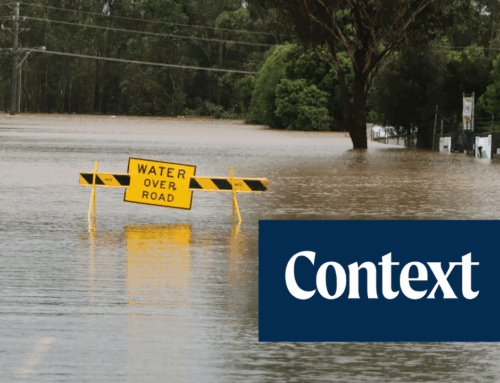The disaster relief bill that President Trump is expected to sign is missing one significant component: money for the Disaster Relief Fund.
The bill passed by the House of Representatives on Monday contains $19.1 billion for more than 25 federal agencies but not a cent for the Federal Emergency Management Agency, which administers the fund and leads the federal response to natural disasters.
The omission makes some sense. The Disaster Relief Fund has a $29 billion surplus and is projected to end the fiscal year $18.2 billion in the black, according to FEMA’s latest monthly report on the fund.
“FEMA is very methodical in how this money is spent,” said former FEMA Administrator Brock Long in an interview yesterday.
The absence of supplemental money for the disaster fund won’t leave survivors in need of help, analysts said. The disaster bill passed by Congress is largely meant to finance government projects that could take years to complete.
The bill also does not contain any overhauls to federal disaster programs, even though members of Congress widely agree that changes are needed in several major programs.
“For the most part, the immediate response for communities and for individuals is taken care of by the Disaster Relief Fund and is not affected by this bill,” said Joshua Sewell, a senior policy analyst at Taxpayers for Common Sense, which monitors federal spending. “We’re not leaving people stranded on roofs.”
The disaster fund is the main source of immediate money for individuals who lose their homes or jobs in a disaster and need cash to rent an apartment; repair their house; fix a car; and buy clothes, medicine and home essentials such as appliances. The fund also pays for communities to clear debris and snow and to repair damaged infrastructure that is not covered by insurance.
The disaster fund received two major infusions after Hurricanes Harvey, Irma and Maria hit Texas, Puerto Rico and the U.S. Virgin Islands in late summer of 2017. Congress approved $18.7 billion in October 2017 and $23.5 billion in February 2018. Those funds were in addition to the money Congress put in the fund in the annual federal budget.
The biggest benefactor in the bill passed Monday is the Defense Department.
The DOD will get $2.7 billion to repair military bases in North Carolina and Florida that were damaged by hurricanes last year and $3.3 billion for the Army Corps of Engineers to repair flood-damaged facilities, such as levees, and to accelerate storm protection projects. The Coast Guard, a military branch in the Department of Homeland Security, gets $526 million to repair storm-damaged facilities.
The bill “provides critical funding to repair military installations that were severely damaged by hurricanes and floods,” Rep. Kay Granger (R-Texas) said on the House floor Monday. The money “will return these facilities to a condition that can support our men and women in uniform and help them get back to the job of protecting our nation.”
Several billion dollars more will go to repair roads, national parks and other Interior Department facilities, and to restore Forest Service accounts that were drained last year to pay for fighting wildfires.
The bill’s sponsor and Democratic supporters emphasized what they said were immediate human needs.
“Americans across the country have been waiting for far too long for the relief and recovery assistance they deserve,” Rep. Nita Lowey (D-N.Y.), chairwoman of the House Appropriations Committee, said on the House floor Monday.
Farmers and ranchers will be eligible for $3 billion allocated for crop and livestock losses that resulted from disasters since Hurricane Harvey.
The other source of help for communities in the disaster bill has a checkered history. The legislation gives $2.4 billion to the Department of Housing and Urban Development for block grants that can be given to disaster-stricken cities, counties and states for a variety of disaster-recovery activities, such as housing and infrastructure improvements.
But HUD has typically taken months to make block grants available when Congress has approved them after previous disasters. The department has yet to allocate $16 billion that Congress approved in February 2018 to help communities damaged by Harvey, Irma and Maria.
“Over 33,000 deeply poor Puerto Rican families sleep in homes with roofs that were blown off by Hurricane Maria and never replaced,” Diane Yentel, president of the National Low Income Housing Coalition, said in a statement after the disaster bill passed the House.
Members of Congress and government auditors expressed wide agreement at a hearing in March that the HUD program needs legislative changes so the department can allocate the money more quickly. The disaster bill does not address those concerns.
The legislation also ignores long-standing problems with the National Flood Insurance Program, which lawmakers agree should be overhauled.
When Congress approved disaster funding after Superstorm Sandy in 2012, the spending package included the Sandy Recovery Improvement Act, which changed how disaster funds were allocated to expedite recovery.
“It’s a missed opportunity,” said Sewell of the taxpayers group. “It’s important for policymakers and taxpayers and communities to strike while the iron is hot.”










